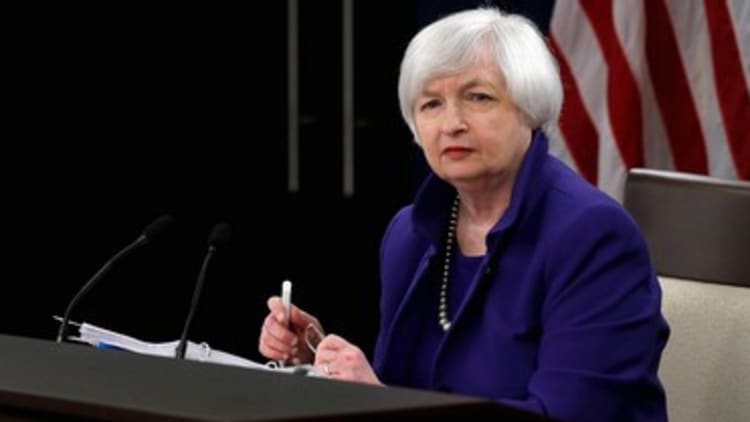
For years, one of the great market mysteries was why the Fed was so reluctant to enact a seemingly innocuous quarter-point rate hike.
Mystery solved.
Since the U.S. central bank began an incremental tightening of monetary policy, particularly over the past 15 months or so, markets have been all over the place, economic growth remains muted and the world has become a scarier place.
That modest Fed move, then, is looming large.
Read More 5 things we've learned so far from a weird 2016
"Now you know," said Nick Colas, chief market strategist at Convergex. "You have to put the last week into context. This has been going on in a progressively more volatile way since the beginning of last year."
Indeed, while stocks have gotten clobbered to start the year, the market has never been the same since the Fed ended quantitative easing in October 2014. The monthly bond-buying program added $3.7 trillion to the Fed's balance sheet and helped jolt stocks to a surge of more than 200 percent since the March 2009 recession lows.
However, the is 3 percent lower since then, and has tumbled 7.3 percent since the Federal Open Market Committee on Dec. 16 approved a quarter-point hike to the funds rate the Fed uses to control interest rates.
To be sure, there's no clear cause-and-effect chart to show how 25 basis points caused the market to fall out of bed. And there have been plenty of extraneous factors, with turmoil in China and tumbling oil exerting significant influence.
But the consistent pattern over the past seven-plus years shows that each time the Fed moves to tighten, or at least to ease back the throttle on its money-printing machine, markets recoil. Now that the FOMC seems on an inexorable road to a series of periodic rate hikes, the path looks rocky.
In the early stages of its easing, the Fed was well ahead of the rest of the world in using aggressive monetary policy, and asset purchases specifically, to boost financial markets. However, currency maneuvering around the globe has gotten considerably more aggressive, with China's recent devaluation effort the latest shot in what some are calling a global currency war.
Closer to home, the Fed's move to tighten while others are loosening comes at a precarious time.
Gross domestic product growth in the fourth quarter is expected to be minimal — around 0.8 percent, according to the Atlanta Fed — while corporate earnings are likely to post another negative quarter and manufacturing is in contraction if not a mild recession.
Conversely, the services sector, which dwarfs manufacturing in the U.S. economy, looks strong and employment growth is continuing apace. However, the positives are not outweighing the negatives in investors' minds.
The 2016 selling hasn't been accompanied by panic, but it has come with conviction. Rallies are being sold, while dips are being bought only briefly.
Exchange-traded funds help tell the story, as they are a popular vehicle for day traders to make short-term bets on market movement.
ETFs have seen a net outflow of assets this year. While it's still early, the industry hasn't seen assets decline since 2008, when it ended with $772 billion under management globally, according to data from BlackRock, the largest ETF manager by assets with $786.5 billion currently. As an industry, U.S. ETFs passed $2 trillion in mid-2015, but the $10.4 billion in January outflows threatens that mark, according to XTF.com. (Global exchange-traded product assets are just shy of $3 trillion.)
Of those outflows, $15.2 billion have come from equities, with $12.8 billion in U.S. stocks alone.
With central bank policy serving as a volatile backdrop, market participants are clearly spooked, at least for the moment.
"ETFs draw money in like a magnet," Colas said. "The fact they're seeing redemptions says this is a legitimate sell-off with legitimate concerns and people are putting their money where their mouth is. They're not just talking bearish, they're acting bearish."
The selling isn't likely to affect Fed policy, for now at least, but FOMC officials are watching the markets closely. The latest message is a little less convincing about where the Fed should go from here. Futures traders' expectations for a March rate hike, nestled well above 50 percent for much of the time since the December FOMC meeting, were at 47 percent Tuesday.






